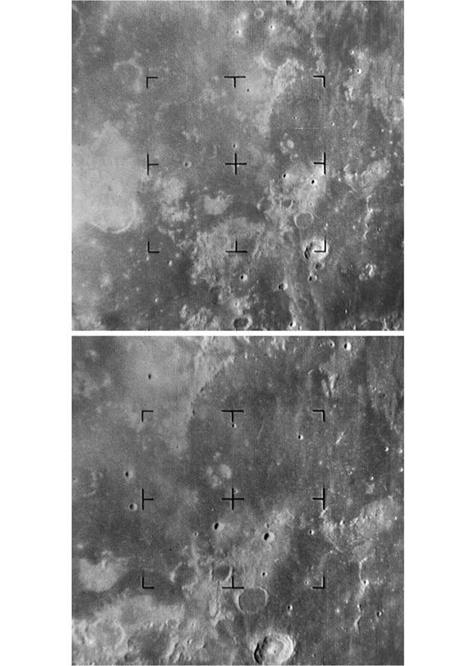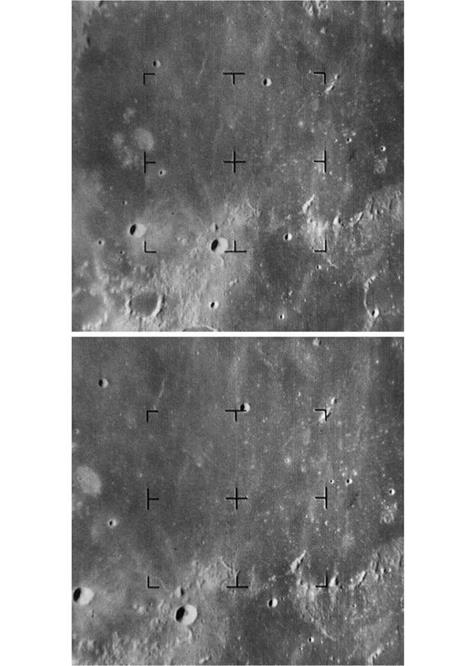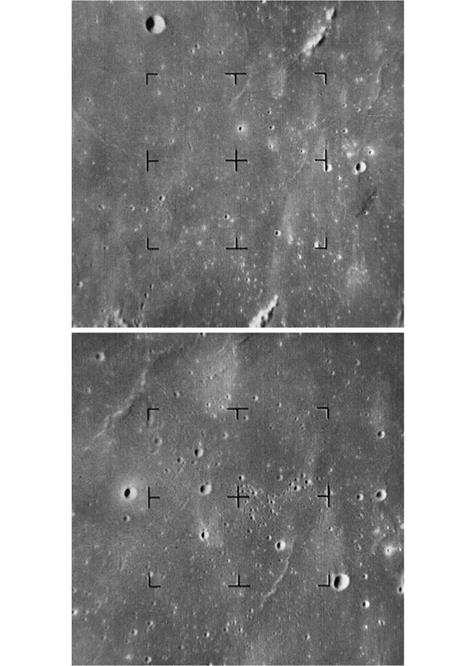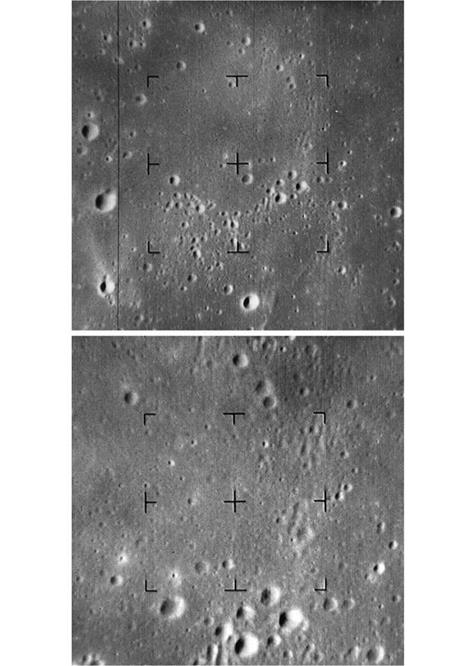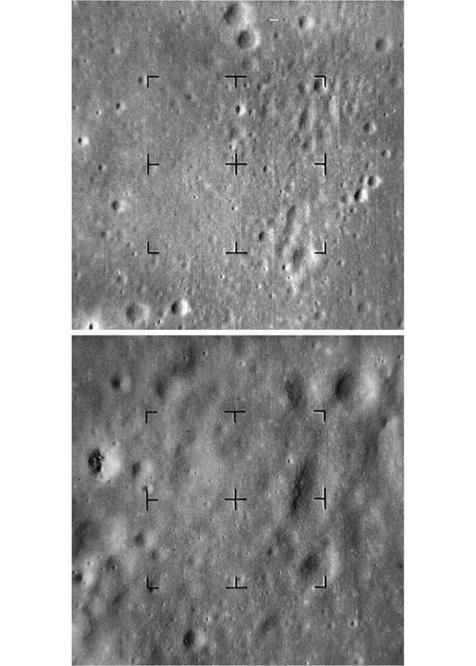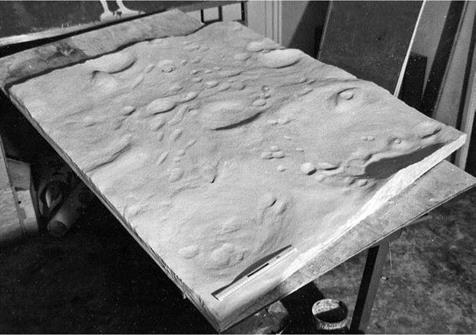Ranger triumphs
SUCCESS AT LAST
Ranger 7 was mated with its launch vehicle on 6 July 1964. The countdown began early in the morning of 27 July, but was scrubbed owing to a problem with the Atlas. It lifted off at 16:50 GMT on 28 July, the Atlas performed flawlessly, and the Agena achieved a circular parking orbit at 185 km then performed the translunar injection.
As to the target, Maxime Faget of the Manned Spacecraft Center had suggested investigating the crater made by its predecessor in order to use that calibrated impact to calculate the strength of the surface material, but the Moon was ‘full’ on 24 July and ‘last quarter’ on 1 August, with the result that the Sun would have set for Mare Tranquillitatis. After an analysis found that the best region would be in the vicinity of Guericke in Mare Nubium, in early July Homer Newell approved aiming for a point where the mare was crossed by bright rays from both Copernicus and Tycho. The translunar injection of 39,461 km/hour was within 6.5 km/hour of that planned. It would have caused the spacecraft to skim the leading limb of the Moon and crash on the far-side. The 50-second midcourse manoeuvre at 10:27 on 29 July established the desired trajectory. Afterwards, the terminal approach was analysed in terms of the angle of illumination of the lunar surface, the direction of the velocity vector of the spacecraft and the optical axis of the camera system, and it was decided that no terminal manoeuvre would be required for the photographic operation on 31 July.
The 3-storey Space Flight Operations Facility had been completed several months earlier. It had a main room for engineers and controllers, and nearby science support rooms for scientists to receive and analyse the incoming data. All these rooms were windowless for 24-hour use. Homer Newell, Edgar Cortright and Oran Nicks joined W. H. Pickering in the VIP gallery. Harris Schurmeier and Patrick Rygh supervised the flight control team. Gerard Kuiper’s experimenters congregated in their room. With 20 minutes remaining, George Nichols informed the auditorium that the wide – angle cameras had started to warm up. The duration of this process had been halved, and 90 seconds later he reported they were on full power, prompting a round of applause. These cameras began to take pictures at 13:08:36. The narrow-angle
cameras followed suit at 13:12:09. It was early morning at JPL, but there was a large crowd of technical staff on hand, and they applauded and cheered when Goldstone announced that both video streams were coming in. Impact was at 13:25:49, within 12 km of the aim point.1 This was the first American lunar spacecraft of any type to fully achieve its mission. Schurmeier produced several cases of champagne for the flight controllers, then led the VIPs to join the experimenters.
When Pickering, Newell and Schurmeier entered the auditorium an hour later for a press conference, they received a standing ovation. A total of 4,316 pictures were received. The first was taken at an altitude of 2,100 km and the last at about 500 metres. Goldstone converted the signal to TV format, and simultaneously stored this on magnetic tape and displayed it on a high-speed monitor. A camera whose action was synchronised with the incoming frame rate recorded each TV frame on 35-mm film – this film was then transferred to a vault. As this was going on, a technician ‘sampled’ another screen using a Polaroid camera to provide an initial evaluation of the quality of the results. The tape was replayed to make another film that was flown to the Hollywood-Burbank Airport for processing by Consolidated Film Industries. In the late afternoon local time, prints and slides were driven to JPL. While the experimenters examined the masters, the VIPs viewed copies. The press conference
![]()
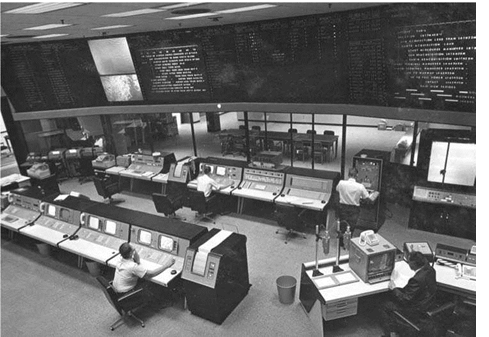 |
The crater that Ranger 7 made was identified in Apollo 16 photography in 1972.
by the experimenters that evening was broadcast ‘live’ by the national TV networks. After Pickering introduced the team, Kuiper, the principal investigator, began the presentation: ‘‘This is a great day for science, and this is a great day for the United States. We have made progress in resolution of lunar detail not by a factor of 10, as hoped would be possible with this flight, nor by a factor of 100, which would have been already very remarkable, but by a factor of 1,000.’’ In fact, he was being a little optimistic, as the resolution of the final frame was about half a metre.
The experimenters were obliged to provide ‘instant science’, to explain what the pictures showed.
Harold Urey pointed out that he was ‘‘pleasantly surprised’’ at the amount of information that could be inferred from the pictures. The surface was cratered, right down to the limiting resolution of the final frame. The bright rays appeared to have been formed by ‘secondary’ impacts as ejecta fell back on low-energy ballistic trajectories from an energetic ‘primary’ impact. Science fiction authors had reasoned that since the Moon had no atmosphere there could be no erosion, and this had led artists to depict an extremely rugged landscape. The fact that the surface was gently undulating was clear evidence that the incessant rain of meteoritic material was a potent form of erosion. Urey introduced the term ‘gardening’ to describe the process by which impacts ‘turn over’ the material.
Kuiper said the pictures supported his belief that the mare plains were lava flows, the surface of which, having been exposed to the vacuum of space, must be ‘frothy’. This was based on laboratory experiments in which fluids of various viscosities had been exposed to vacuum. He ventured that when an astronaut walked on the surface, the experience would be similar to walking on crunchy snow. He accepted that there would be a layer of impact-generated fragmental debris, at least in some places, but thought it would be very thin, perhaps no more than a few centimetres.
Given the presence of large and obviously heavy blocks of rock, Gene Shoemaker was confident that the surface would bear the weight of a lander.
Nevertheless, Thomas Gold of Cornell University, who was not on the experiment team and not at the conference, had a theory that the maria were deep accumulations of fine dust. On seeing the Ranger 7 pictures Gold told reporters that whilst the dust would flow and tend to smooth out small-scale deformations, the rate at which it did so might be as little as a millimetre per year. As evidence of such flow, he pointed out that the rims of the older-looking craters were softer than the rims of the newer – looking ones.[22]
Although the Ranger 7 results were consistent with the ‘hot Moon’ hypothesis, in which the maria were volcanic lava flows, Urey did not give up on his ‘cold Moon’ hypothesis in which they were splashes of impact melt.
Several days later, Robert Gilruth, the Director of the Manned Spacecraft Center,
|
|
|
|
|
|
|
|
|
|
|
An oblique view of the plaster model of the lunar surface made by the US Geological Survey’s Branch of Astrogeology on the basis of the final high-resolution images from the Ranger 7 spacecraft. |
and Joseph Shea, the Apollo Spacecraft Program Manager in Houston, visited JPL to be briefed by the experimenters. Shea later told reporters that in the pictures much of the mare plain appeared “relatively benign’’. Overall, Gilruth said, an Apollo landing should be “easier than we thought’’.
On 28 August NASA hosted the Interim Scientific Results Conference, chaired by Oran Nicks. The visual highlight was a 5-minute movie of successive frames of the picture sequence showing Ranger 7’s dive. Immediately afterwards, the experiment team went to the International Astronomical Union meeting in Hamburg, Germany, and showed the movie again. The Union designated the Ranger 7 target area Mare Cognitum – the Known Sea. Shortly afterwards, as the pictures were being used to make an atlas of this region, Gerard Kuiper marvelled, “To have looked at the Moon for so many years, and then to see this. . . it’s a tremendous experience.’’ Ranger 7 gave a flood of data to a community which had been starving for years. The population statistics for primary projectiles is such that there is a small number of really large ones and increasing numbers of ever smaller ones. An airless surface exposed to such a population will gain many small craters, and progressively fewer larger ones. Given actual numbers for the populations, the cratering density (derived from counting) provides an age estimate – at least in terms of a presumption of how the population of projectiles changed over time. The simplest hypothesis is that this has remained constant, so that although the sheer number of potential projectiles has declined, their proportions have remained the same. It was evident that large caters would stand apart, but there would be a size of crater at which a given surface would be saturated – i. e. such craters would be so numerous that they would be rim to rim, and each new crater would mask an old one. This saturation would produce a sharp transition in the ‘crater curve’. Dating by this method can be done only using craters which exceed the saturation size. It was not possible to determine this telescopically, but Ranger 7’s pictures enabled the saturation size for this patch of Mare Nubium to be estimated at 300 metres. At less than this size, the surface was in a ‘steady state’. The areal coverage of Ranger 7 did not include many craters larger than 300 metres, but William Hartmann at the Lunar and Planetary Laboratory of the University of Arizona attempted the measurement and derived an age of 3.6 billion years. During the 1950s C. C. Patterson at Caltech had radiologically dated a number of meteorites, and reached the conclusion that the solar system formed 4.55 ( + 0.07) billion years ago. If the Moon formed at that time, Hartmann’s crater counting indicated that the surface of Mare Nubium was about a billion years younger.
While the scientists digested the Ranger 7 results, there was a hiatus in the project to accommodate the launches of Mariner 3 and Mariner 4 in November 1964, which also used the Atlas-Agena and hence the same pad facilities at the Cape.











